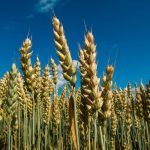 Big data has been increasingly utilized in agriculture in recent years, but one of the more interesting applications has emerged in a recent paper from the University of Illinois. It utilizes the full electromagnetic spectrum captured by satellite imaging to solve a range of complex agricultural problems.
Big data has been increasingly utilized in agriculture in recent years, but one of the more interesting applications has emerged in a recent paper from the University of Illinois. It utilizes the full electromagnetic spectrum captured by satellite imaging to solve a range of complex agricultural problems.
“In places where we may see just the color green in crops, electromagnetic imaging from satellites reveals much more information about what’s actually happening in the leaves of plants and even inside the canopy. How to leverage this information is the challenge,” the authors say. “Using various spectral bands and looking at them in an integrated way, reveals rich information for improving crop yield.”
Broad vision
The work is believed to be the first time that so many spectral bands have been used to provide such a broad perspective on crops.
“We used an integrated framework called Partial Least-Square Regression to analyze all of the data together. This specific approach can identify commonly shared information across the different data sets. When we pull the shared information out from each data set, what’s left is the unique information relevant to vegetation conditions and crop yield,” the team say.
The analysis revealed a surprising level of commonality in the data collected by satellites, certainly in relation to crop biomass. Different satellites do uncover fresh insights however around things such as environmental stresses experienced by crops due to things such as drought. This is crucial as crop observation is made challenging due to the very nature of the grain and the way it grows inside the canopy.
“Visible or near-infrared bands typically used for crop monitoring are mainly sensitive to the upper canopy, but provide little information about deeper vegetation and soil conditions affecting crop water status and yield,” the authors say.
Monitoring the microwave radar data at the Ku-band however contains a lot of valuable information, including the biomass and also data linked to crop water stress. By measuring in this band, researchers can also penetrate the canopy to see the whole crop.
By aggregating all of this together, the researchers believe that satellite data could significantly enhance our ability to monitor crops and increase yields.
“This is an age of big data. How to make sense of all of the data available, to generate useful information for farmers, economists, and others who need to know the crop yield, is an important challenge,” they say. “This will be an important tool. And, although we started with the U.S. Corn Belt, this framework can be used to analyze cropland anywhere on the planet.”